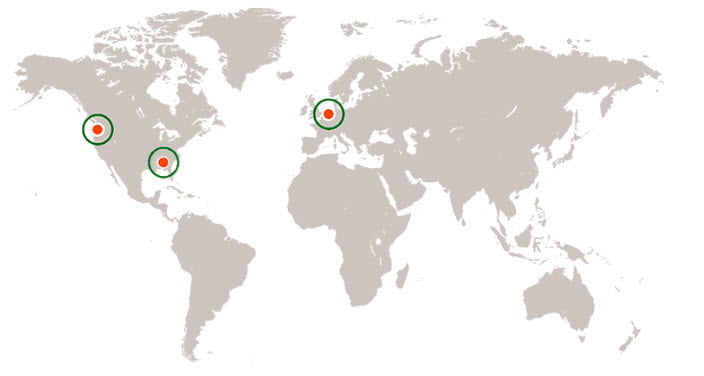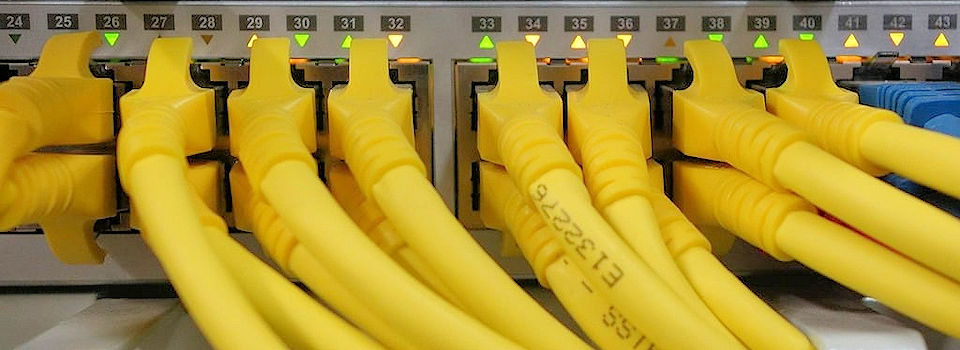We’re upgrading and expanding our MIDAS network!
We’re adding additional new client nodes in Europe (in Amsterdam, Netherlands), and on the West Coast of the US (in Seattle, Washington).
We’ll also be upgrading existing client nodes in our East Coast US data center (in Atlanta, Georgia) too.

Why are we doing this?
As part of our continued commitment to the service we provide, we’re investing in new additional hardware, upgrading older hardware, and expanding our network infrastructure.
What are the benefits?
Our network expansion is designed to further improve the speed and performance of existing cloud-hosted MIDAS systems.
By relocating cloud-hosted customer’s MIDAS systems to data centers which are geographically closer to them, faster communication speed between an end-user’s device and their MIDAS system can be achieved.
As a result, customers should notice that their MIDAS systems will load and respond quicker than before.
For new cloud-hosted customers, going forward our network expansion will also mean that we can offer a choice of data center for where their hosted MIDAS system will reside.
What’s happening and when?
Our network expansion and upgrades are scheduled to take place during February and March 2023. The work is being done in 5 phases, which are outlined below:
Phase 1: (Expected completion: End of February 2023)
The first phase of our network expansion involves provisioning new client nodes in Amsterdam, Netherlands and in Seattle, Washington.
Phase 2: (Expected completion: End of March 2023)
Once the new client nodes are up and running, the second phase involves migrating existing cloud-hosted customer’s MIDAS systems to the new Amsterdam or Seattle nodes where appropriate.
For example, if a customer is geographically closer to one of these new locations than they are to the current East Coast US node where their MIDAS system resides, we’ll move them to a closer node.
Phase 3: (Expected completion: End of March 2023)
Once applicable existing clients have been relocated onto the Amsterdam or Seattle nodes, phase 3 sees a reorganization of existing client nodes located in our East Coast US data center (in Atlanta, Georgia).
We’ll be retiring some older client nodes in this data center after we’ve moved customers to the new West Coast and EU nodes. The remaining East Coast US client nodes will be consolidated, which will mean that some customers may move nodes within the East Coast US data center.
Phase 4: (Expected completion: End of March 2023)
The forth phase of our expansion plan sees an upgrade to the server hardware which runs our main website, blog, and our public demo and private trial systems.
Phase 5: (Expected completion: End of April 2023)
The final phase of our network expansion sees the upgrading of remaining East Coast US client nodes to bring their hardware up to date and in line with the new nodes in the West Coast US and EU data centers.
Will there be any downtime?
We do not envisage any loss of access to our customer’s cloud hosted MIDAS systems during these network upgrades.
However, when we migrate a customer’s MIDAS system to a new node, we’ll temporarily place their system running on the old node into “Maintenance Mode” whilst the migration to the new node is performed.
“Maintenance Mode” essentially puts a MIDAS system into a special “read only” state. So you’ll retain full access to all your booking information, but won’t be able to make any changes.
Once the migration to the new node is complete, your MIDAS system will come out of “Maintenance Mode”, and you can continue using the software again as normal.
We anticipate that any “Maintenance Mode” period will last less than one hour.
We plan to carry out migrations at a time when a customer’s MIDAS system is typically least active (i.e. in the middle of the night)
We’ll also notify the “Primary Contact” we have on record in advance of any server migration and provide an estimated time when their migration will take place.
Can I choose which data center my MIDAS system will reside?
We’ll be contacting all existing cloud-hosted customers by email in advance if their MIDAS system is proposed to be migrated to a different data center. We’ll provide details of the data center we propose to move their MIDAS system to, and an estimate on when their migration will take place.
Customers will have a chance to respond to these emails to request a different data center, or that their cloud-hosted MIDAS system remains in their current data center.
Where can I get updates on the progress of these network upgrades?
We have a dedicated page over on our Service Status site, that we’ll continually update during these network expansion and upgrade works.
What if I have further questions?
If you have any questions or concerns in relation to our network expansion, please don’t hesitate to reach out to us, and we’ll be happy to help!



 Current versions of Edge, Chrome, and Firefox browsers fully support HTTP/2.
Current versions of Edge, Chrome, and Firefox browsers fully support HTTP/2. Current versions of Safari support HTTP/2 on OSX 10.11+
Current versions of Safari support HTTP/2 on OSX 10.11+ Internet Explorer 11+ supports HTTP/2 on Windows 10 only
Internet Explorer 11+ supports HTTP/2 on Windows 10 only
 A green light indicates a service is performing normally and there are presently no issues.
A green light indicates a service is performing normally and there are presently no issues. An amber light indicates that a service is currently working, but isn’t performing optimally.
An amber light indicates that a service is currently working, but isn’t performing optimally. A red light indicates a service is currently experiencing a temporary fault/outage.
A red light indicates a service is currently experiencing a temporary fault/outage. In addition to our dedicated Service Status site, we also post service status updates and upcoming scheduled maintenance notifications on our Twitter feed.
In addition to our dedicated Service Status site, we also post service status updates and upcoming scheduled maintenance notifications on our Twitter feed.

